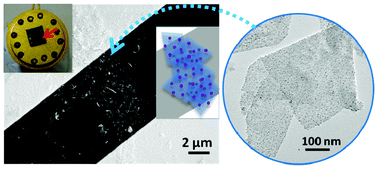Non-covalently modified graphene supported ultrafine nanoparticles of palladium for hydrogen gas sensing†
Abstract
A facile aqueous based method of decorating p-phosphonic acid calix[8]arene functionalized

* Corresponding authors
a
Centre for Strategic Nano-Fabrication, School of Chemistry and Biochemistry, The University of Western Australia, Crawley, WA 6009, Australia
E-mail:
colin.raston@uwa.edu.au
Fax: 61 8 6488 8683
Tel: 61 8 6488 3045
b Surface Science & Technology Group, School of Chemistry, The University of Melbourne, VIC 3010, Australia
c School of Chemical and Physical Sciences, Flinders University, Bedford Park, South Australia 5042, Australia
A facile aqueous based method of decorating p-phosphonic acid calix[8]arene functionalized

 Please wait while we load your content...
Something went wrong. Try again?
Please wait while we load your content...
Something went wrong. Try again?
X. Chen, F. M. Yasin, P. K. Eggers, R. A. Boulos, X. Duan, R. N. Lamb, K. S. Iyer and C. L. Raston, RSC Adv., 2013, 3, 3213 DOI: 10.1039/C3RA22986F
To request permission to reproduce material from this article, please go to the Copyright Clearance Center request page.
If you are an author contributing to an RSC publication, you do not need to request permission provided correct acknowledgement is given.
If you are the author of this article, you do not need to request permission to reproduce figures and diagrams provided correct acknowledgement is given. If you want to reproduce the whole article in a third-party publication (excluding your thesis/dissertation for which permission is not required) please go to the Copyright Clearance Center request page.
Read more about how to correctly acknowledge RSC content.
 Fetching data from CrossRef.
Fetching data from CrossRef.
This may take some time to load.
Loading related content
